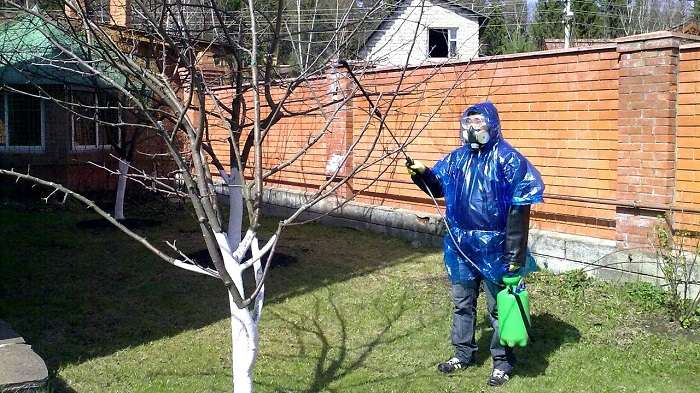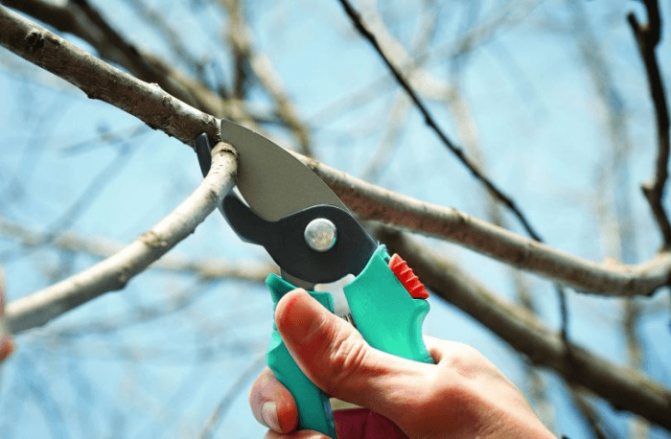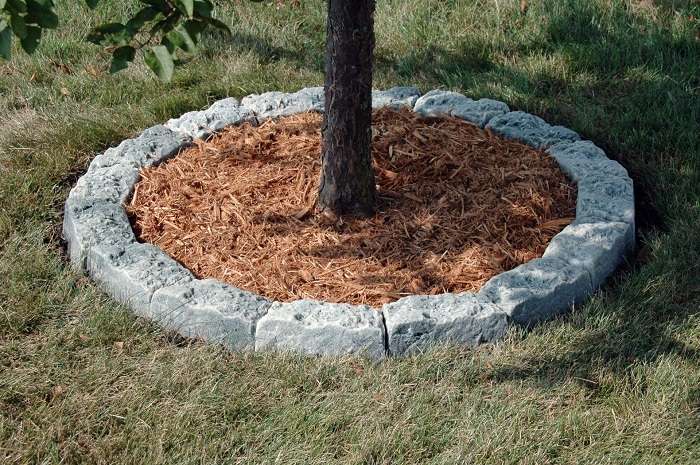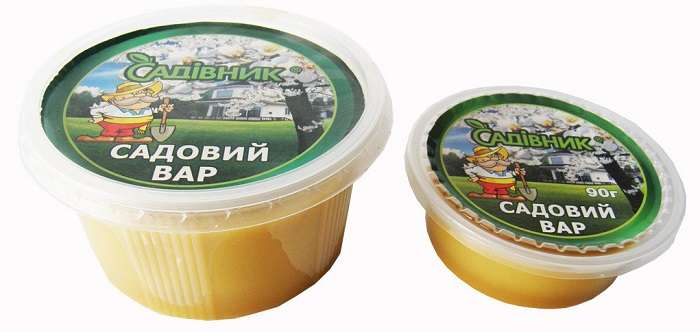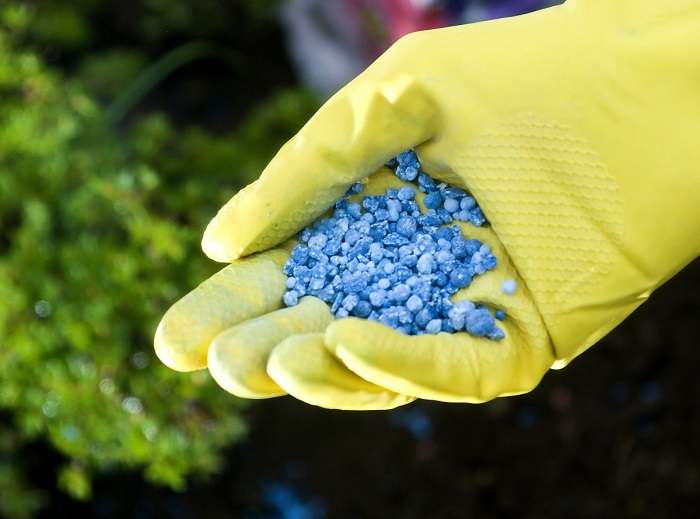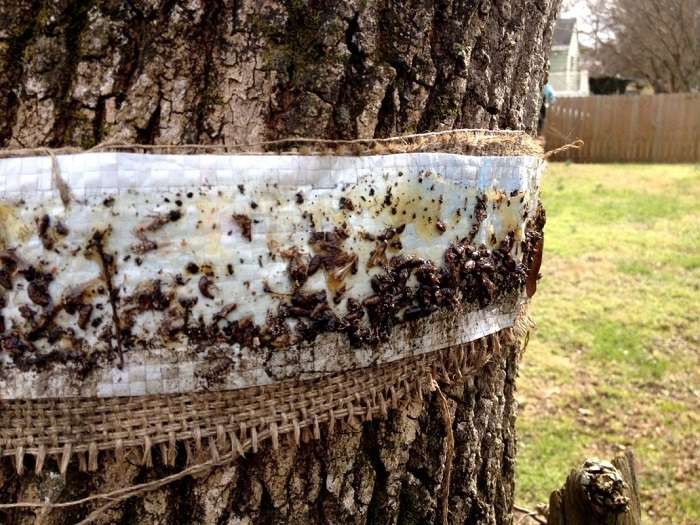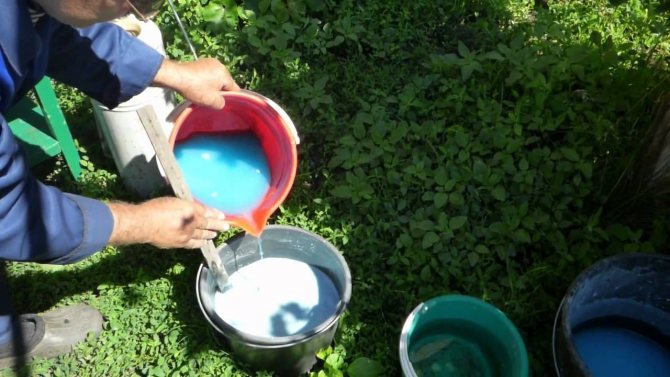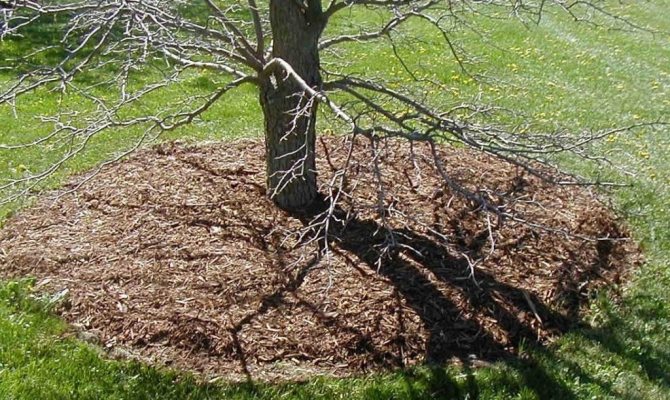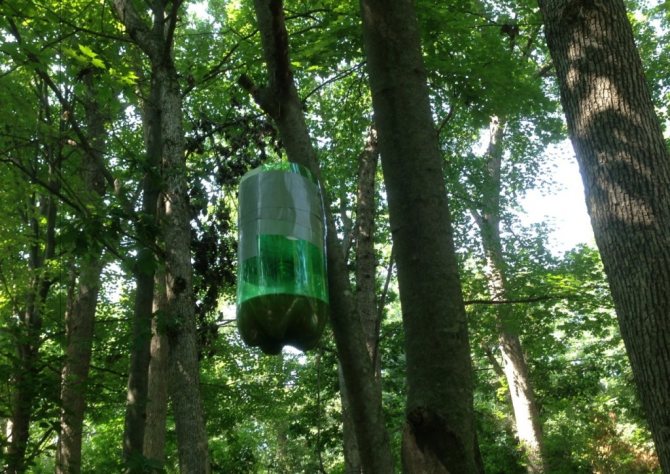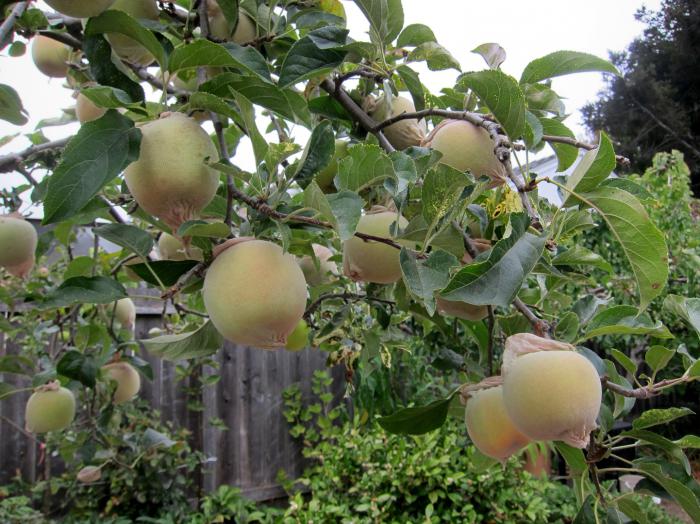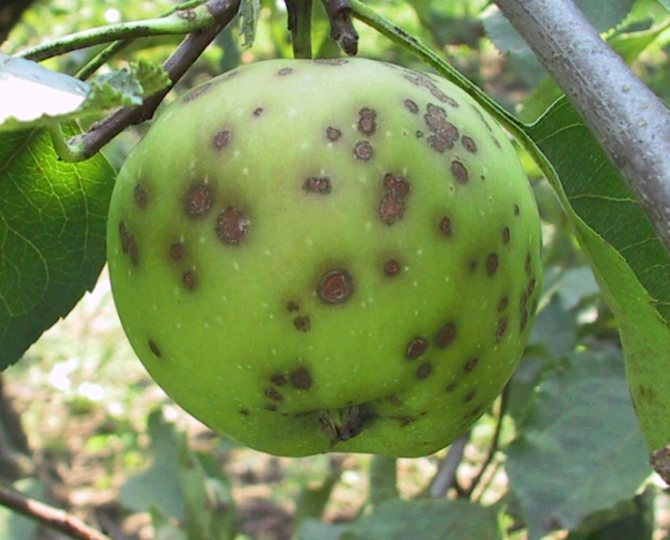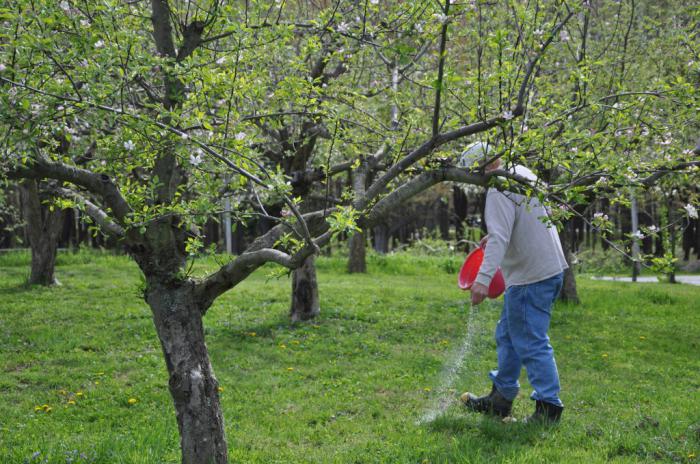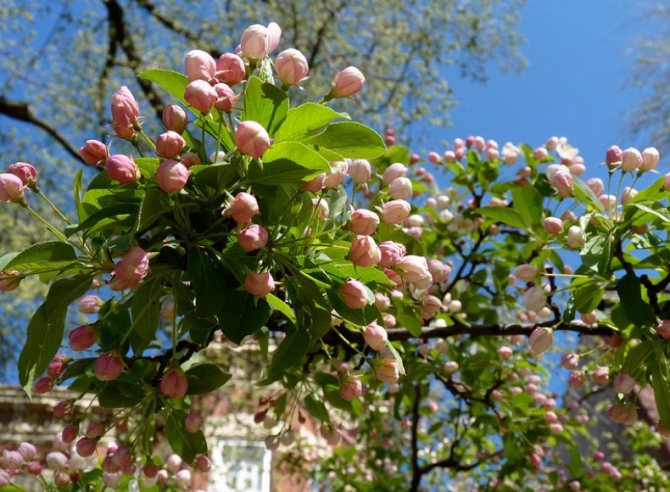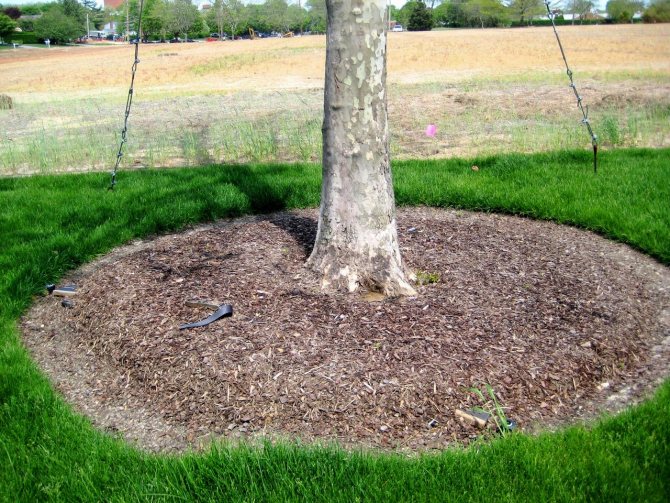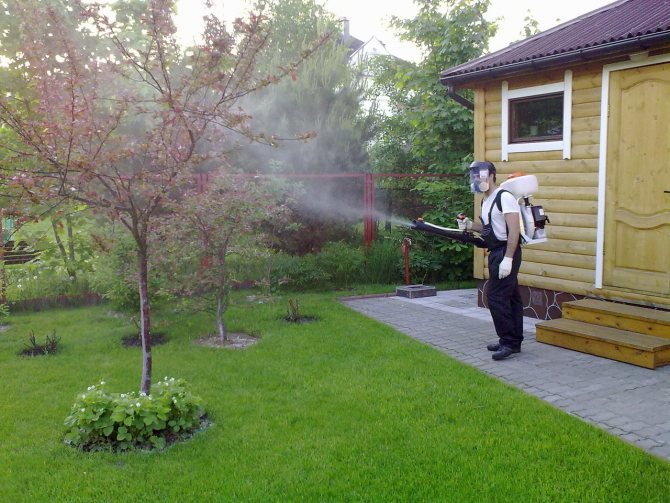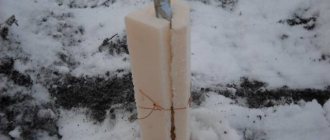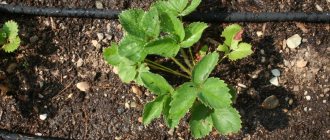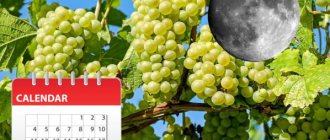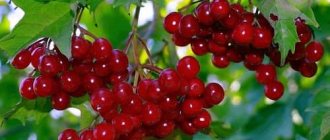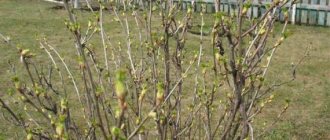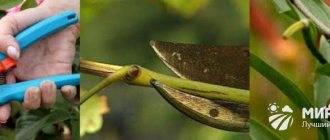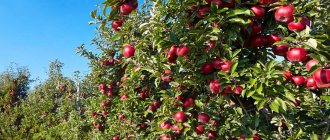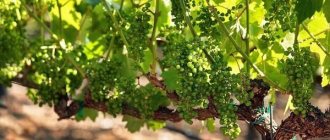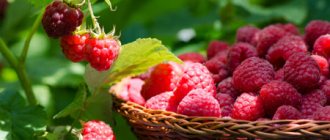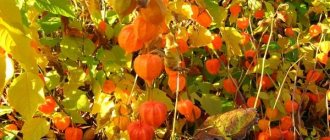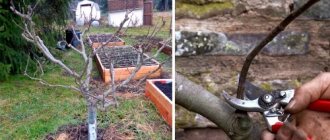In the spring season, gardeners begin to actively work on their personal plots. This period is used to prepare fruit trees for the coming season. Especially carefully you will need to care for the apple tree in the spring.
Trees should be started from March to April. It is important that the soil has warmed up enough by this time and the snow has completely melted. Often, fruit trees suffer precisely because of the sudden return of cold weather.
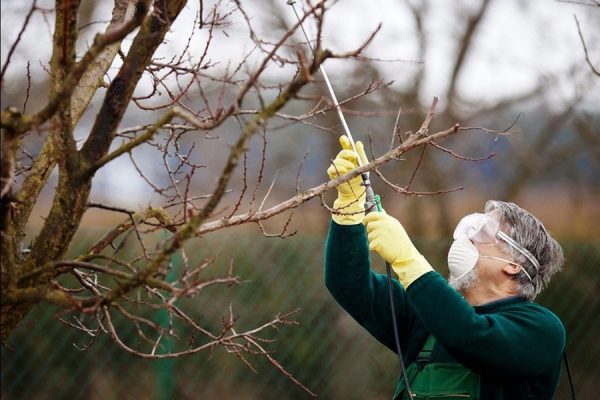
Apple tree care in spring
Do I need to whitewash apple trees in spring?
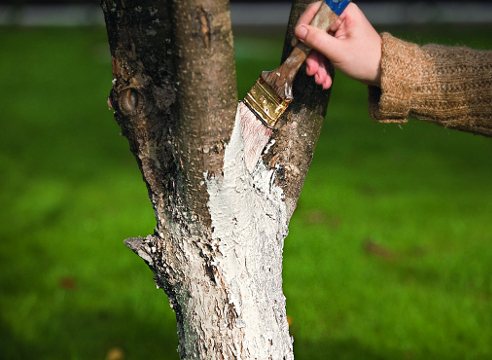

In February - early March, when the sun can damage the smooth bark of young apple trees, they need to be painted from the ground to the skeletal branches with a special acrylic-based garden paint. This whitewash remains on the tree for a long time, is not washed off by rains and does not fall off in frost. After the snow melts, it is useless to whitewash the trees as protection from the sun, it will be only decorative. In trees over 10–15 years old, the bark is almost not subject to burns, and there is no need to whitewash the trunks.
Cleaning and whitewashing of fruit tree trunks.
Whitewashing of trunks
Hotter and hotter in spring the sun's rays can burn the smooth bark of young apple trees. Autumn whitewashing is washed off during the winter, so in the spring the trunks should be whitewashed again. Even the whitewash does not allow waking pests to get to the apple tree.
The white hue is known to perfectly reflect the hot rays of the sun, so whitewashing will protect the tree from overheating in summer. This is done in early spring, when the snow has not yet melted.
For whitewashing, buy acrylic paint or make it yourself:
- Stir 300 g of lime thoroughly;
- 2 tbsp. tablespoons of stationery glue;
- 2 liters of clean water;
- You can add a small amount of copper sulfate.
This whitewash is applied to adult apple trees; it is recommended to apply chalk to young seedlings.
Bleached in dry, clear weather. Apply the composition evenly.
Treatment of winter injuries of the apple tree
In early - mid-March, after the snow melts, inspect the lower part of the apple tree trunk. If the bark shows traces of damage by rodents, urgent measures must be taken. It is enough to cover superficial damage with garden pitch.
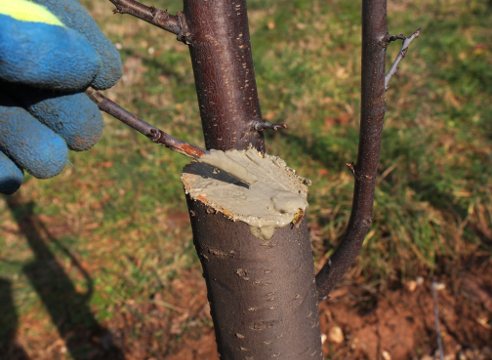

If the bark is eaten on a "ring" right up to the wood, graft with a bridge, using the maximum number of cuttings.
In winter, the bark of the apple tree is also damaged by frost. This manifests itself in the form of brown spots on the trunk, sometimes the damaged bark bursts and separates from the wood. In early spring, trim off the edges of the bark that have come off the trunk and cover the sections with pitch. If the damage is not very extensive, then over time, the wound will heal completely. In case of severe damage, when the detached part occupies half or more of the trunk diameter, inoculate with a bridge. Use cuttings from a damaged tree or taken from other frost-resistant varieties, for example, Antonovka.
Diseases caused by sunburn and frostbites.
Spring pruning of apple trees
You can start pruning the apple tree in March, when the air temperature does not drop below –10 ° C, and continue until a green cone appears at the buds (in April).
In young trees, a crown is formed, paying special attention to strengthening the skeletal branches of the first and second order.
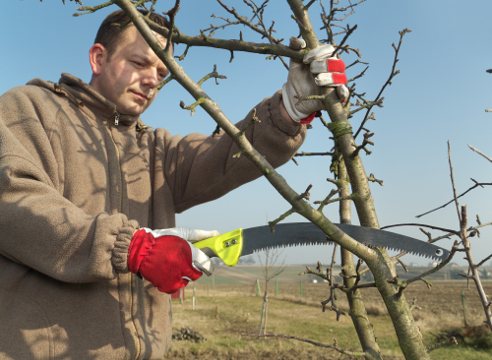

During pruning, shoots are removed, which can obscure the branches formed in previous years from the sun and departing at an acute angle from the trunk. The distance between the skeletal branches of the first order should be at least 40–70 cm. The branches of the second order are cut so that they remain looking to the sides and slightly upward. In old trees, dry branches are cut first.
If the tree is taller than 4–4.5 m, then its height is reduced. You can determine the optimal height of the tree by standing on the upper platform of the stepladder (8 steps) and stretch your hand up. At this height, it is convenient to treat the tree with chemicals from pests and harvest.
When the crown is reduced, they begin to thin it out. The same principle applies here as in the formation of a young tree - all the main branches should have a sufficient distance between themselves, and the upper branches should not obscure the lower ones.
Work with a hand pruner and a garden saw. It is best not to use an air pruner, as it is very difficult for them to cut the branches correctly.
All about formative apple pruning.
All about sanitary pruning of apple trees.
Characteristic
The Good News apple variety is distinguished by its high characteristics, attractive appearance and taste of apples. The apple tree is quite resistant to external influences and unpretentious.
Advantages and disadvantages
There are much more positive properties of an apple tree than disadvantages. Among them it is worth noting:
- scab immunity;
- frost resistance;
- taste and type of fruit;
- storage duration.
There were no particular drawbacks that would become an obstacle to growing the variety.
Size of an adult tree
The apple tree has a beautiful round or spherical shape. Medium sized variety when grown with a seedling of about 5 meters. But they can be grafted onto a half-dwarf, then the height will be no more than 4 meters.
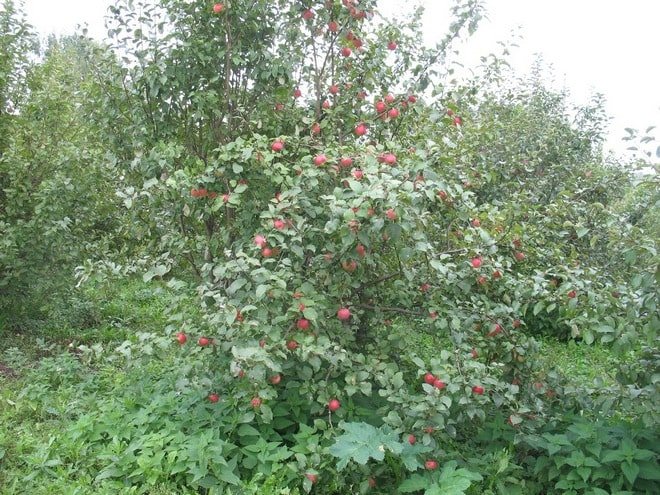

Apple tree Good News.
Annual growth
The good news does not grow rapidly, rather the opposite. Shoots grow evenly and gradually over the entire crown. No strong growth force is observed.
The frequency of fruiting
Fruiting occurs regularly from year to year, without pauses in development. Even if the apple tree is damaged or damaged in the spring, it very quickly recovers and blooms.
Yield
By the standards of gardeners, the yield can hardly be called abundant or too high, it is rather average. Different sources give completely different figures: from 20 to 60 kg per young tree.
Tasting assessment
The assessment of organoleptic and taste varies between 4.5-4.8 points. The apples are very beautiful, yellow with a red blush. The pulp is soft, creamy, juicy. The taste of the fruit is sweet and sour, the aroma is practically absent.
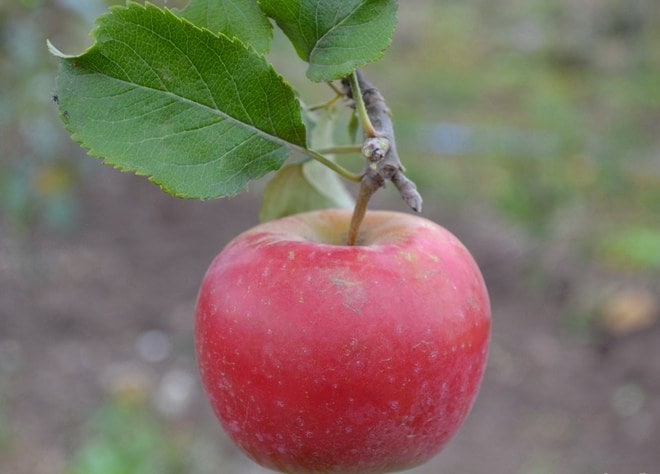

Apple fruit Good News.
Winter hardiness
Low temperature resistance is very good. The variety is grown without any difficulties in the Urals and partly in Siberia. Moreover, the Good News is growing well in other regions.
Resistant to scab and other diseases
The good news is immune to the five races of scab. And this is ideal stability, because there are only five of them. The high level of immunity helps to cope with other common apple diseases.
Spring treatments of apple trees from diseases and pests
In March, as soon as thawed patches begin to appear around the trees, it is time to install glue trapping belts on the boles to protect against crawling wintering pests. This protective measure helps especially well against the flower beetle weevil.
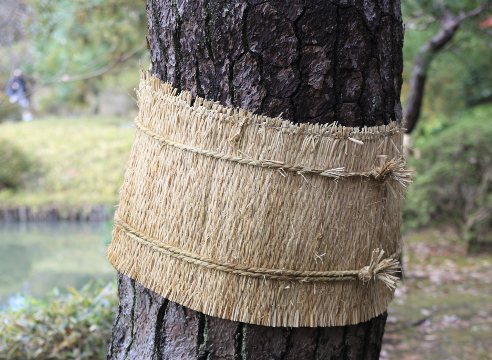

The belt should fit snugly against the trunk of the tree to keep insects out.
How to install a trapping belt.
The next treatment of the garden from pests and diseases occurs at the time of the appearance of a green cone in the buds. By this time, the air temperature in the daytime has already reached + 12 ... + 15 ° С.They use chemical preparations designed to destroy pests and spores of parasitic fungi: Decis, Fufanon, Iskra, Inta-Vir. There are preparations that can be mixed with each other ("Horus" and "Aktelik"), so that spraying against pests and diseases can be carried out simultaneously.
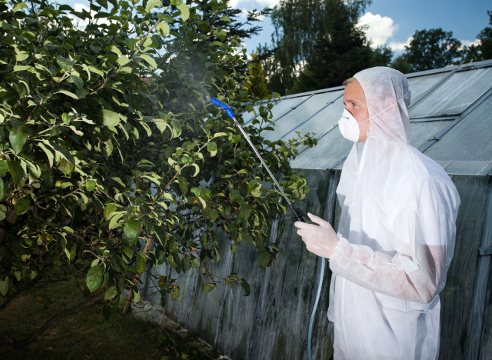

The second spraying is done after flowering, when the fruit ovaries become noticeable. At this moment, a new wave of insect activation and the maturation of spores of harmful fungi begins. It is undesirable to use highly toxic drugs, it is better to use bacterial ones: "Lepidocid", "Bitoxibacillin" or "Fitoverm" and "Akarin".
Spray trees in dry weather. For potent drugs of systemic action, such as "Skor", "Horus", "Aktelik", 4-5 hours are enough for their effect to manifest. Typically, two spring treatments with strong formulations are sufficient to keep the garden healthy for the entire season.
How to help a sick apple tree.
Summing up
In fact, spring care for apple trees is not difficult. But its timeliness ensures a stable harvest every year. Following all the rules, you can grow large and juicy fruits on each tree.
All stages of spring work in the garden must go sequentially. Chemicals must be used strictly according to the instructions so as not to harm the trees.
You can see the fruits of your labor very soon. Trees will look healthy and enjoy harvests. There are no barren trees, there are owners who are inattentive to their garden.
Spring grafting of an apple tree
In May, when the leaves have already blossomed and intensive sap flow has begun, you can graft new varieties into the crown of your apple trees.
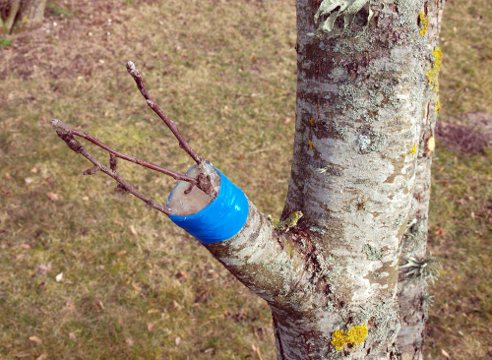

Vaccinations can be done until the end of May, stocked from the winter cuttings. The success of such operations at this time reaches more than 90%.
Winter grafting of an apple tree.
Apple grafting methods.
Fertilizing under the apple tree in the spring
Apple trees should not be fed by simply spreading fertilizer over the surface. They will either be used by grass or washed off with melt water. It is also not necessary to spread the manure on top of the snow cover. Such an operation will only reduce the rate of snow melting.
In April, it is better to apply fertilizers into the soil under the sod layer to a depth of 20–25 cm, piercing the ground with a crowbar or digging holes along the perimeter of the crown. Approximately a handful of complex granular fertilizer is poured into each depression and covered with earth on top. This feeding is enough for 2-3 years. You can add 500 g of urea or 5 buckets of humus to the trunk circle. Additional feeding of the fruit tree is necessary in the case of severely depleted soil, for example, when planting a garden on sandy soils or drained swamps. Usually, the fertilizer added to the planting hole is enough for a fruit tree for a long time.
If you observe a suppression of crown development, at the beginning of flowering, dissolve in a barrel of water 300 g of potassium sulfate, 1 kg of superphosphate, 10 liters of mullein, insist for a week and water the trees at the rate of 40-50 liters per tree.
After the beginning of fruiting (at the end of May), the tree is fed, excluding nitrogen fertilizers and increasing the potassium and phosphorus components. These two components stimulate the formation of flower buds, and accordingly increase the yield of the tree.
A complete calendar of apple tree care.
What spring feeding to use in caring for an apple tree
In early spring, you need to clear the snow around the apple tree, trampling it down well. This procedure should not be neglected, it helps to prevent damage to the tree by mice. Hungry rodents spoil the bark of fruit in the spring, which affects the health of the tree and productivity. Even if there is a lot of snow, the apple tree needs to be excavated. You can lay out baits with rodent poison under a tree in the fall.
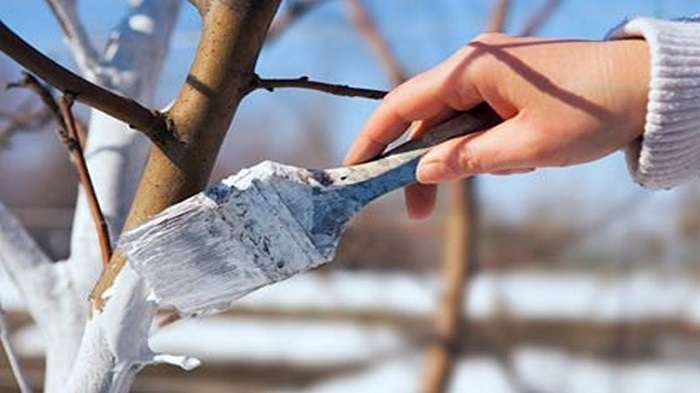

Digging up and trampling snow saves not only from rodents.Young trees suffer during the thaw, when the snow cover breaks off fragile branches. By removing the snow before the onset of heat, you can save the seedling from many diseases that develop at the site of damage.
If you do not use any fertilizers in early spring, then you will only have to dream of a good harvest. Professionals advise to make top dressing that regulates the growth of green mass, develop a good seedling immunity and form a good harvest.
When the snow has completely melted, you need to dig up the ground around the apple tree and sprinkle with ammonium nitrate. The granules will gradually dissolve and be absorbed into the soil.
Remember, you cannot dig the soil under the columnar apple tree. Such a procedure will disturb its surface roots and lead to the death of the tree. The soil under the seedling is gently loosened, all weeds are removed.
Spring is a great time for nitrogen fertilization. Watering with a solution of bird droppings, mulching with peat or compost has a good effect on the growth of an apple tree. When working with poultry droppings, you need to observe the concentration of the solution and act according to the method "it is better to underfeed than overfeed."
- urea;
- humus;
- ammonium nitrate;
- nitroammofosk.
Top dressing is applied on wet soil or after rain. This should be done around the entire circumference of the crown.
During the flowering period, seedlings need feeding with urea. Young trees are especially demanding for fertilization. They are fertilized three times at intervals of half a month.
- urea;
- ash;
- manure;
- potassium sulfate.
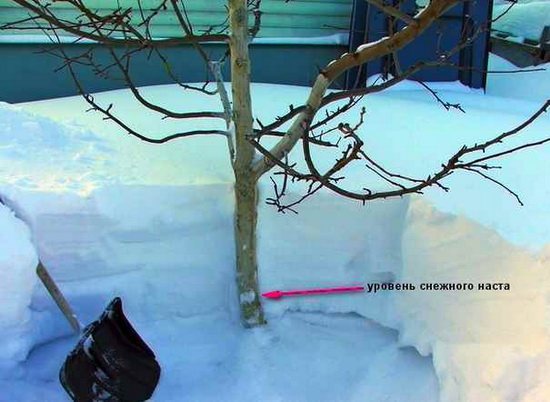

Complex mineral fertilizers also give good results in spring feeding.
They contain all the substances necessary for the growth and development of the apple tree. During the period of fruit formation, it is worth feeding the apple trees to form large fruits.
- herbal infusion;
- sodium humate.
Herbal infusion is prepared from freshly cut grass without seeds, which is placed in a container and poured with water. The grass is left to ferment for about two weeks. As soon as the liquid acquires a dark color and a specific smell, it can be used to nourish the apple trees. The finished slurry is diluted in a ratio of 1:10 and the trees are watered.
How to loosen the soil and water the apple tree
After winters with little snow, by the time the leaves bloom on the trees, the moisture in the soil may no longer be enough. If the spring is rather dry, warm, there is no rain, then young trees and seedlings planted in spring or autumn should be watered at least once every 4–5 days. This also applies to young, up to 5–6 years old, trees.
After watering, it is advisable to loosen the soil shallowly to prevent the formation of a crust on the soil.
To maintain soil moisture, you can mulch the trunk circle with straw or peat, but not with sawdust, this material increases the acidity of the soil. Do not lay mulch around trees in a thick layer, leaning against the trunk of the tree. Harmful insects and mice can grow there, a thick layer of mulch remains wet for a long time, and the bark can begin to undermine, and this will lead to infection of the tree with fungal diseases.
How to properly water an apple tree.
How to protect a blooming apple tree from late frosts
If frost is possible, spray the crowns of the apple trees with a spray hose the night before so that water droplets cover all the leaves abundantly. If you can do it, then it is best to continue sprinkling until dawn. Water drops, freezing, will give their warmth to the leaves. This method works only in calm weather. In the presence of wind, sprinkling of the apple tree crown is absolutely impossible, in this case it gives the opposite effect. If the kidneys have not yet opened, then a decrease in temperature practically does not cause tangible harm.
The way to protect a blooming apple orchard is to smoke it. Put heaps of sawdust, fallen leaves, grass, peat around the stake driven into the ground. Sprinkle a pile of damp earth on top. In the evening before the frost, remove the stake, and set the heap on fire. The stake hole will serve as a chimney.A pile with a diameter of 1.5 meters and a height of 50 cm is able to protect a garden area of one hundred square meters for one night.
Growing in regions
Some regions are suitable for planting the Good News, while for others the variety is not yet so widespread and familiar.
In the Urals
The Urals are considered the optimal and suitable region for planting this variety. It is also common in the Volga-Vyatka region, Mordovia and Bashkiria. Moreover, here he is considered one of the best.
In the Altai Territory and Siberia
There is still not enough data to objectively assess how well the variety is grown on the territory of Altai and the Siberian region. The variety did not receive mass distribution there, perhaps because of its novelty.
How to transplant an apple tree so that it takes root faster
It is better to replant trees in spring before the leaves bloom, then the root system is better restored. Before digging, you need to shed plenty of soil in an area equal to the projection of the crown.
It is quite easy to dig up and transplant a tree under the age of 3 years, but it will lose part of the root system. However, with a quick transplant, abundant watering and fairly strong pruning, it will survive and recover over time.
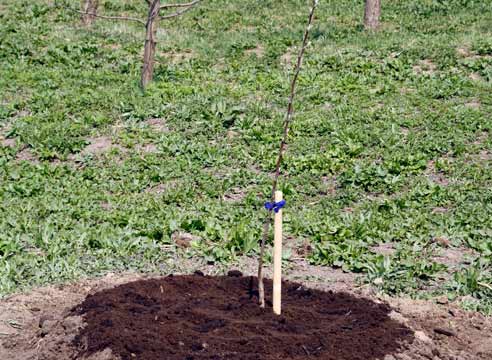

How to plant an apple tree seedling correctly.
More mature trees (4–6 years old) are more difficult to transplant, because you need to keep as many roots as possible. Make a ditch along the perimeter of the crown, simultaneously chopping down the roots that come across and gradually deepening by 1.5–2 bayonets of the shovel. Next, the resulting lump is gently undermined in the direction of the taproot, which then needs to be chopped off. Move the tree to a new place along with a clod of earth. Water the tree abundantly after transplanting. To bring the crown into line with the damaged root system, prune vigorously, leaving a center conductor, a few skeletal branches, and a minimum number of second-order branches and last year's growth.
It happens that the apple tree dies and the tree has to be uprooted. If you wish to preserve this variety, cut off a healthy branch and graft onto another apple tree. Is it possible to plant a new apple tree in this place? Sure you may. The causative agents of diseases of the apple tree, including "black cancer", are not transmitted through the soil. To plant a new apple tree, line the edges of the hole after removing the tree stump. Mix the soil that was removed from the pit with peat, manure and sand (if the soil is clayey). Mix well and pour back into the pit so that a small mound 25–30 cm high forms above it. Drive a stake into the center of the mound, to which you will then tie the planted seedling.
How to plant an apple tree in a wetland.
How to choose and buy a good apple tree sapling in spring
It is best to buy seedlings with an open root system when the soil is ready for digging. It is not recommended to store them without soil for a long time. Wrap the roots of the apple tree with a damp cloth, put in a bag and store in a dark, cool place, such as a basement, but no more than 3-4 days. You can plant an apple tree in the garden as soon as you can stick a shovel into the ground. At this time, the earth has already thawed, and its moisture makes it possible for the apple seedling to get as much water as it needs.
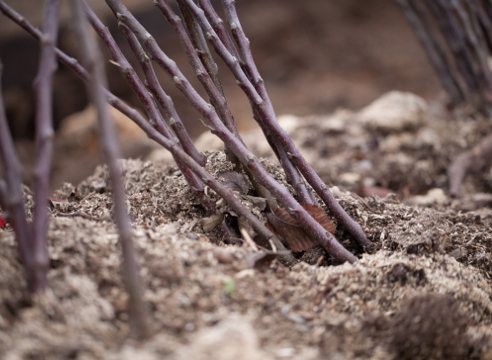

An apple tree seedling with a closed root system can be stored for several weeks or even months before planting in the garden. It is enough just to regularly water the container with the seedling.
How and where to buy a good apple tree seedling.
You can consult the author of the article and ask him questions about caring for an orchard here.
conclusions
Spring activities are important, but they are not omnipotent. The behavior of the apple tree in the current season largely depends on the previous one.
Bountiful harvests, excessively rainy summers and fall, harsh winters weaken the plants. But phosphorus-potassium dressing in August - September, prevention and treatment of diseases, autumn eradication spraying, sub-winter water-charging irrigation - these and other agrotechnical measures contribute to the improvement of the apple orchard, successful wintering and active development in spring.

